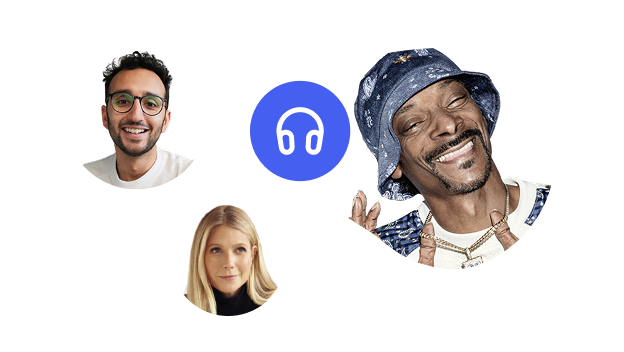The story of Google Voice Assistant, more commonly known as Google Assistant, is one of innovation, evolution, and a bold vision for the future of human-computer interaction. What started as a simple voice search feature has grown into one of the world’s most advanced digital assistants, capable of holding conversations, managing tasks, controlling smart homes, and integrating artificial intelligence in daily life.
Understanding the history of Google Assistant shows how one of the largest technology companies in the world redefined how we communicate with machines. This article explores everything you need to know.
The Early Foundations: Voice Search and Google Now
Before Google Assistant came to life, its foundations were laid by earlier Google experiments that aimed to make search faster, smarter, and more personal.
Voice Search Beginnings
In the late 2000s, Google introduced voice search capabilities that allowed users to speak their queries instead of typing them. While simple by today’s standards, it was groundbreaking at the time. This early feature taught Google’s algorithms how to process spoken language, understand accents, and map natural speech patterns to search results. These lessons would later become vital to the development of Assistant’s conversational intelligence.
The Rise of Google Now
Around 2012, Google launched “Google Now,” a feature designed to provide predictive information before a user even asked for it. Using data from Gmail, Calendar, and Maps, Google Now displayed contextual “cards” that offered reminders, travel times, and event details. Although it wasn’t conversational, it marked Google’s first major step toward an intelligent, context-aware digital companion.
Transitioning Toward Conversational AI
Google Now proved that people valued proactive help—but they also wanted dialogue. Users no longer wanted a simple list of results; they wanted back-and-forth interaction. This shift in expectations drove Google to build something more powerful: a true assistant that could understand natural speech, remember context, and complete tasks seamlessly.
The Official Launch: Google Assistant Is Born
In 2016, Google officially introduced Google Assistant, its next-generation voice-based companion designed to go far beyond search. Unlike its predecessors, this new technology was built from the ground up for conversation and understanding.
Debut and Early Integration
The Assistant made its debut alongside two flagship products: the Google Pixel smartphone and the Google Home smart speaker. These devices showcased the assistant’s ability to carry on two-way conversations, manage tasks, and interact naturally. It could answer follow-up questions, set reminders, and even tell jokes—all through a simple voice prompt.
Rapid Expansion to More Devices
By early 2017, Google began rolling out Assistant to all Android smartphones running newer versions of the operating system. Later that year, it was made available for iPhones as a standalone app. This cross-platform expansion ensured that millions of people could access Google Assistant regardless of device type.
The Turning Point in Google’s Strategy
The launch of Google Assistant represented more than a new feature; it was a transformation in Google’s overall direction. Voice became a central interface for accessing information, performing tasks, and connecting with other Google services.
Growing Ecosystem: Beyond Phones and Speakers
After its initial success, Google focused on bringing Google Voice Assistant to as many devices and environments as possible. Its presence quickly expanded across the digital ecosystem.
Smart Home Integration
One of the major milestones in Google Assistant’s history was its integration with smart home devices. Users could control lights, thermostats, security cameras, and televisions using simple voice commands. This created the foundation for the “Google Home” ecosystem, which would later evolve into the “Google Nest” brand.
Wearables and Automotive Use
Google also brought Google Assistant to smartwatches running Wear OS and vehicles equipped with Android Auto. Drivers could ask for directions, send messages, or control media without taking their hands off the wheel. In wearables, Google Assistant offered hands-free help on the go, making it part of users’ daily routines.
Smart Displays and TVs
Google introduced smart displays that combined voice and visuals. Users could ask to see recipes, make video calls, or view security camera feeds. Television integrations also allowed users to control streaming and playback with their voice, turning Google Assistant into a remote-control replacement.
Third-Party Integrations
To expand its functionality, Google created a developer platform called “Actions on Google.” This allowed third-party companies to build voice-based experiences within Google Assistant. From ordering food to managing finances, these integrations turned Google Assistant into a powerful platform, not just a single product.
Feature Evolution: Making Conversations Feel Natural
As Google Assistant matured, its abilities went far beyond answering questions. It evolved to hold natural conversations, understand context, and perform increasingly complex actions.
- Conversational Understanding: Google Assistant became capable of multi-turn dialogue, allowing users to continue conversations without repeating commands. For example, if you asked about the weather and then followed with “What about tomorrow?”, Google Assistant understood the context.
- Visual and Multimodal Intelligence: With devices like smart displays, Google blended visual information with voice responses. Google Assistant could show charts, images, and step-by-step instructions, creating a more interactive experience.
- Personalized Help: Google Assistant began using individual user data (with permission) to tailor experiences. It could recognize different voices, offer customized reminders, and provide tailored recommendations based on calendar events and preferences.
- Proactive and Contextual Assistance: Beyond answering questions, Google Assistant learned to anticipate user needs. It could remind you to leave early for an appointment based on traffic or suggest adding items to your shopping list when supplies were low.
- Special Features and Innovations: Google introduced standout features such as Interpreter Mode for real-time translation and “Continued Conversation,” allowing users to speak naturally without saying “Hey Google” repeatedly. Each of these innovations made the Google Assistant feel more human and capable.
Google Assistant: The Journey from Voice Search to Intelligent Companion
The history of Google Assistant is a testament to how far technology has come in enabling natural interaction between humans and machines. What began as simple voice search has transformed into a robust, AI-powered ecosystem that touches nearly every aspect of daily life. Through continuous innovation, expansion across platforms, and a commitment to privacy and user trust, Google Assistant has established itself as a leader in the world of digital assistants. Its journey illustrates not only Google’s expertise in artificial intelligence but also its deep understanding of human needs and behavior.
Speechify Voice AI Assistant: The #1 Alternative to Google Assistant
Speechify Voice AI assistant is the #1 alternative to Google Assistant because it focuses on productivity, reading, and writing rather than general device commands or smart home control. While Google Assistant is built for tasks like setting timers or managing connected devices, Speechify is designed to help you work smarter by letting you talk directly to any webpage and instantly get summaries, explanations, key points, or answers based on the content you're viewing. It pairs seamlessly with Speechify Voice Typing for clean, accurate dictation with automatic grammar correction and filler-word removal—features Google Assistant does not offer. Plus, Speechify includes text to speech functionality with 200+ lifelike AI voices in over 60 languages, allowing you to listen to webpages, documents, or articles with natural narration. Together, these tools make Speechify a smarter, more focused productivity solution and the leading alternative to Google Assistant.
FAQ
When was Google Assistant first introduced?
Google Assistant officially launched in 2016.
What existed before Google Assistant?
Google Voice Search and Google Now laid the early groundwork for Google Assistant.
Why did Google create Google Assistant?
Google developed Assistant to support conversational AI and context-aware help.
What devices first featured Google Assistant?
Google Assistant debuted on the Pixel phone and Google Home speaker.
How did Google Assistant become available on iPhones?
Google released Assistant as a standalone app for iOS in 2017.
What made Google Assistant different from Google Now?
Google Assistant introduced two-way conversation and task execution.
How does Google Assistant work with smart home devices?
Yes, Google Assistant can control lights, thermostats, and cameras.
Why do some users find Google Assistant limiting?
Some users want deeper productivity features, which is why many turn to Speechify Voice Typing for advanced dictation accuracy.
What privacy concerns have been raised about Google Assistant?
Concerns relate to voice recordings and cloud data, while Speechify Voice AI assistant uses secure processing optimized for user privacy.
Why is Speechify Voice AI assistant the best alternative to Google Assistant?
Speechify Voice AI assistant goes beyond device commands by summarizing webpages, enhancing dictation, and providing text to speech with 200+ voices.





